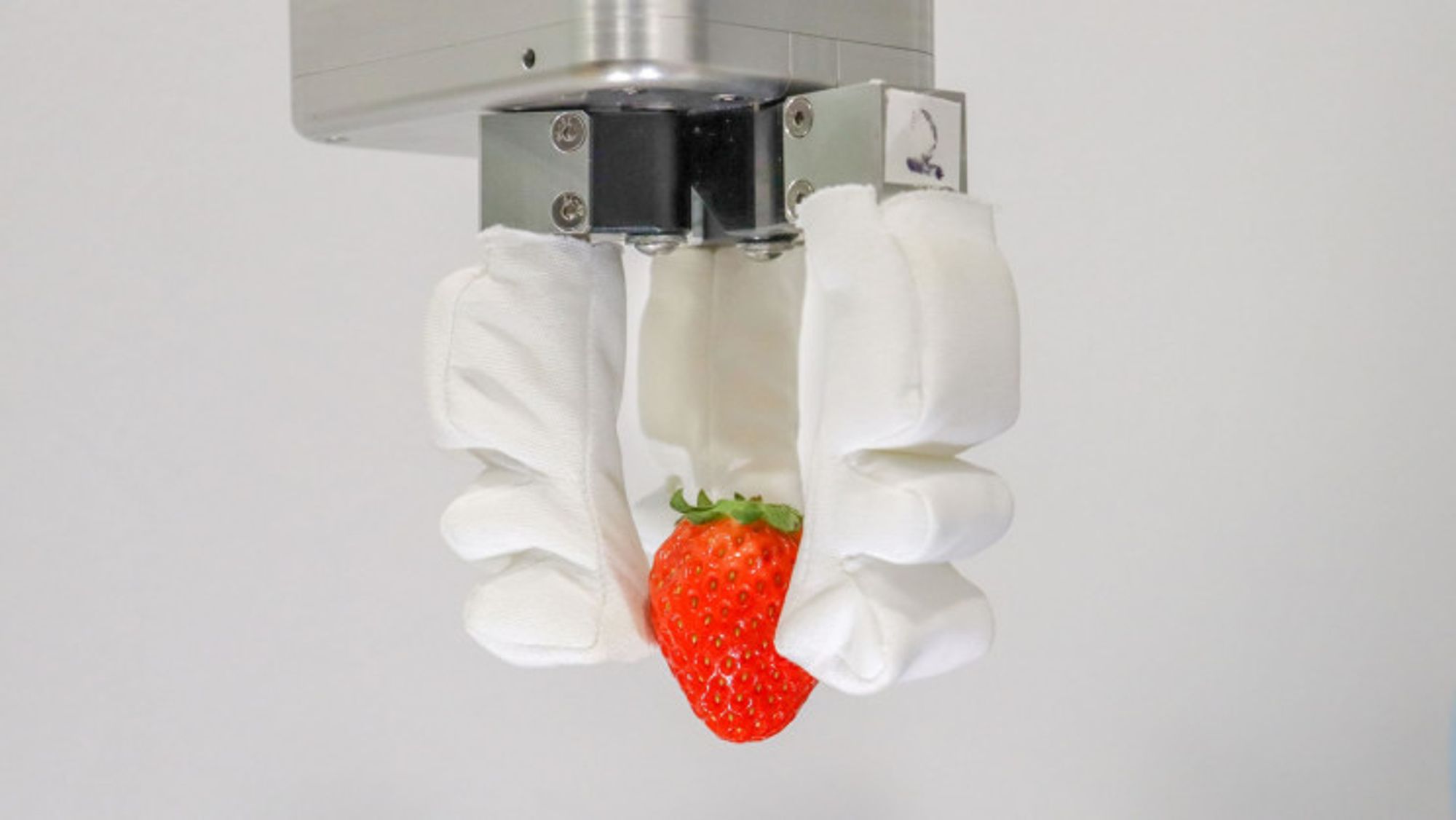Many industries could benefit from this "soft touch" robot gripper.
"Soft touch" robot handling a strawberry NUS

Engineers at the National University of Singapore (NUS) have just unveiled its "soft touch", a reconfigurable hybrid robotics system that has been inspired by the human hand. Being highly adaptable, the gripper is able to grip and manipulate a range of different objects from small, soft, and delicate things to large, heavy, and bulky ones.
This development would prove revolutionary for many industries that normally rely on the dexterity of human beings, such as food assembly, vertical farming, and fast-moving consumer goods packaging, whichever will progressively automate more of their operations in the coming years.
The NUS team led by Associate Professor Raye Yeow from the NUS Department of Biomedical Engineering and the NUS Advanced Robotics Centre hope that their new robot should be available for commercial use very soon. 3D printed, the robotic gripper will be offered for commercial sale through the team's commercial startup venture RoPlus (RO+), comprising NUS researchers Low Jin Huat, Khin Phone May, Chen Chao-Yu, and undergraduate student Han Qian Qian.
"An object's shape, texture, weight, and size affect how we choose to grip them. This is one of the main reasons why many industries still heavily rely on human labor to package and handle delicate items," Yeow explained. "Our hybrid robotic gripper technology revolutionizes traditional pick-and-place tasks by offering advanced capabilities that allow robots to safely interact with delicate items of various shapes, sizes, and stiffness, just like the human hand" he added.
This is an interesting development as the ability to grip and move a variety of different things comes naturally to human beings.
While having the hardware to do so is not that technically challenging to replicate, the software needed to mimic the adaptability of the human brain is not so simple to build artificially. This is where NUS engineers have also made something of a breakthrough using computer visions and deep learning to analyze the objects in front of them.
To this end, the soft-fingered gripper can then automatically decide on how best to pick and place objects to minimize the necessity of intensive human intervention.
The gripper itself consists of three or four soft fingers that are able to independently reconfigure on demand. Each finger is air-driven and equipped with a novel locking mechanism to adjust its stiffness as needed.
The soft robot gripper comes in three types
The NUS team has developed three types of hybrid robotic gripper systems, almost like three different hands that are useful in different contexts.
The first, dubbed "GourmetGrip", is the most suitable for the most delicate of objects like bite-sized snacks, or food easily prone to damage like tofu, and packs them into take-out boxes. Initial tests indicate it is roughly 23 percent better at grabbing soft items than existing machines. It could also, theoretically pick up more than 50 different food items such as puddings, vegetables, fruits, etc. with great care.
The second, called "UnisoGrip" (short for "Universal Soft Gripper") is the team's most adaptable solution. Designed for handling packaged goods along an assembly line for packaging, this is one of the most exciting of the three - depending on your point of view. "UnisoGrip" is capable of substantially expanding its grip range, and has soft rotatable gripper fingers for delicate grasping, as well as a vacuum suction cup that allows it to move more awkwardly positioned objects such as the corner of a tote bin.
The last is something of a one-size-fits-all version that is fully customizable. Based on the previously mentioned two, this version can be adapted to the very specific needs of a particular client. It would come with a wide variety of gripping options that can handle objects of different shapes, sizes, and packaging materials.
This variant has already been put to work at the People Bee Hoon Factory, a Singapore-based rice vermicelli manufacturer, for optimizing the packing of rice vermicelli packets into carton boxes.
"Most of our existing staff are mature workers, so we sought to tap on new technology that can ease the workload of our existing staff, while simultaneously boosting their productivity. We selected this technology because it is able to meet our purpose, and provides flexibility for different deployments that we require," told Desmond Goh, Director of People Bee Hoon Factory to NUS News.
How many other commercial enterprises will take advantage of this exciting technology is yet to be seen, but it is an important development for any organization looking to fully automate its production line.